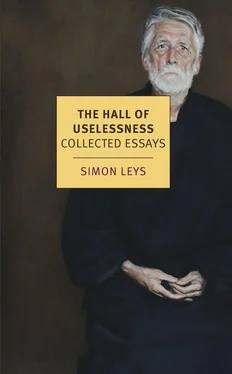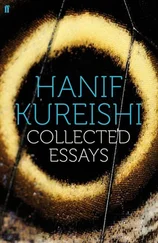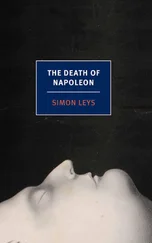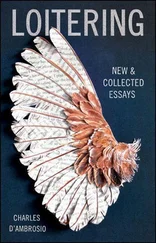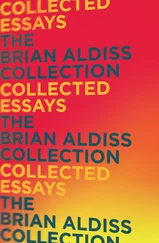79. Beck , p. 51.
80. Martin , pp. 18–19.
81. Schlum ., p. 75.
82. Sheridan, p. 288; quotes from Journal 1, pp. 530, 531, 560, 572, 573.
83. PD 3, p. 303. Also quoted by Malraux (with a slight variant: “… religion et pédérastie”) in his preface to PD 1, p. xx. In 1950, barely one year before Gide’s death, the Tiny Lady noted once again: “As Gide told me nearly fifty years ago, what interests him most is Christianity and pederasty.” This had not changed. ( PD 4, p. 190.)
84. Sheridan, p. 438.
85. Schlum ., p. 289, also p. 192.
86. PD 2, p. 437; Sheridan, p. 606. Note that, on the Catholic side, there was no unanimity on this subject. For instance, Georges Bernanos, whose genius was inspired by a profound spirituality, dissociated himself from these anathemas: “I cannot share the rather crude views of Claudel and Massis who believe that Gide is possessed by the devil.” And he proclaimed publicly his admiration for Gide: “a great writer, one of the greatest in our literature”—while reserving his most ferocious barbs for his co-religionist Claudel: “ J’avouerais volontiers que la disproportion de l’homme à l’oeuvre, de l’héritier spiritual de Rimbaud à ce Champenois roublard qui ajoute chaque année un galon de plus à sa casquette, donne l’idée de je ne sais quelle truculente imposture .” (See J. Bothorel: Bernanos, le mal-pensant [Paris: Grasset, 1998], pp. 118, 161.) On this issue, Francois Mauriac’s numerous comments are of particular interest. His position was more complex: unlike Bernanos, he knew Gide personally, and unlike Claudel, he retained affection and sympathy for Gide. (Mauriac was a repressed homosexual.) His assessment of the question, however, it is disturbing: “During my life, I had, if not the evidence, at least the feeling that Evil is really and substantially a person . Some individuals who I knew were great sinners did not at all convey to me the impression that they might be possessed, whereas in some others whose life was apparently less dissolute, I felt that sort of presence. Certain lives which I was able to observe over a fairly long period of time, appeared to me as if bathed in a weird and murky light… There are people who had to struggle all their lives against a presence which they themselves unhesitatingly identified. I shall only mention one of them — since he himself mentioned it publicly and repeatedly: André Gide, whose example is all the more striking in that, towards the end of his life, it seemed that he could no more speak of the devil without turning it into a joke. And yet, it would appear that, earlier on, he never doubted, not that he was possessed by the devil, but at least that he had to deal with him directly…” Mauriac quotes two passages from Gide; the first one, from Si le grain ne meurt : “I recently realised that an important actor in this drama might well have been the devil. At first I will tell it without taking into account the participation of this protagonist, whom I came to identify only long afterwards.” The second passage is from Journal des Faux-monnayeurs : “Certain days, I discover in me such an invasion of evil, that it feels as if the Prince of Darkness had already established Hell within myself.” (F. Mauriac: Oeuvres autobiographiques , Pléiade [Paris: Gallimard, 1990], “Ce que je crois,” chap. VII, pp. 608–9.)
87. PD 2, p. 432. Gide learned this witticism from his German friend Curtius, who once quoted it to him in 1935, when describing his life in Nazi Germany.
88. Schlum ., pp. 15–16.
89. “Numquid et tu,” Journal 1, p. 588. The incident at the funeral is described in Schlum ., p. 345 and Sheridan, pp. 617–18.
90. Letter to F.-P. Alibert, quoted by Schlumberger: Madeleine et André Gide (Paris: Gallimard, 1956), p. 171. Ménalque, Alissa and Lafcadio are characters in his books — respectively: Les Nourritures terrestres, La Porte étroite and Les Caves du Vatican .
91. Journal 1, p. 37 (3 June 1893).
92. Journal 2, p. 1, 066 (3 September 1948).
93. Beck , p. 167.
94. Hélène, the neurotic and aggressive wife of R. Martin du Gard. She felt an acute revulsion towards Gide: sometimes, his mere presence made her physically ill.
95. PD 3, pp. 49–50, 58.
96. PD 4, p. 119.
97. Journal 1, p. 1, 325.
98. Journal 1, p. 1, 271.
99. PD 3, p. 38.
100. Journal 2, p. 663.
101. PD 4, p. 17.
102. Schlum ., pp. 187, 188.
103. PD 1, p. 31.
104. PD 1, p. 408.
105. PD 3, p. 111.
106. PD 2, p. 17.
107. Journal 2, p. 825.
108. See M. Saint-Clair: “Galerie privée,” in Il y a quarante ans , pp. 169–71.
109. Schlum ., p. 369.
110. PD 2, pp. 150, 152–3, 156.
111. PD 3, p. 187.
112. “He said to an intimate acquaintance: ‘What a wonderful role my wife could have played for me, if only she had agreed to! — Which role? — Well, she could have helped me to attract children into our house.’” ( Herbart , pp. 38–9).
113. Herbart , pp. 35, 40.
114. Herbart , pp. 52–3. The last point is also made by R. Martin du Gard ( Martin , p. 121).
115. Herbart , p. 75.
116. Julien Green: Journal—1946–1950 (entry of 15 June 1948), quoted in Herbart , p. 52.
117. “I am sure these two are the friends whom Gide likes most.” ( PD 4, p. 145).
118. Herbart , pp. 9–10; “I belong to a generation for whom Les Nourritures terrestres was indifferent… I felt that Gide was merely charging through open doors.” And Martin , p. 139: “It is a fact: not one book of Gide ever became for me one of these livres de chevet which mould unconsciously one’s personality through long and constant acquaintance. Tolstoy, yes. Chekhov, Ibsen, George Eliot, yes. And some others too. But Gide, no. Not even his Nourritures , not even his Journal .”
119. Herbart , pp. 69–70.
120. Music also occupied a significant place in his life; over prolonged periods of time, he would spend many hours a day at his piano — and even, during his various stays abroad, in Italy or in North Africa, securing the daily use of a good piano was always an important concern of his. But he confessed to the Tiny Lady that he was not naturally a musician: “I make do with intelligence and culture, as a substitute for innate talent.” ( PD 1, p. 262.) Bach and Chopin seem to have inspired him most. Regarding Chopin, in particular, he was deeply dissatisfied with most of the great interpretations of his time, and he developed his own theories on the subject. His Notes sur Chopin , published in 1939 and 1948, were unfortunately not included in the 1999 Pléiade volume of Essais critiques . (The Notes were at last reissued by Gallimard in 2010.)
He had no original taste in painting: “Painting did not interest me naturally; my interest for painting is a mere consequence of culture” ( PD 2, p. 427). Once, on learning that an important retrospective exhibition of Degas had already concluded, Gide exclaimed with spontaneous relief: “Good! We won’t need to visit it!” ( PD 3, p. 14.) This cri du coeur is revealing: looking at painting seems to have been for him more a sort of cultural obligation than a natural enjoyment. Still, he wrote an essay on Poussin (also missing from the otherwise excellent edition of Essais critiques ). In his Journal , references to painters are rare, but some are quite shrewd — like this one, for example, on Delacroix: “Neither in his writing nor in his painting does he succeed in getting really close to his inner self — as Baudelaire, Stendhal or Chopin could all do; and yet he knew how to appreciate these artists.” ( Journal 2, p. 311.) Other entries are downright frustrating: for instance, he noted having met Vuillard and Vallotton in the Louvre ( Journal 1, p. 119) — but he did not record what they said and what they saw. (Then why bother mentioning such a meeting? This is pointless name-dropping!)
Читать дальше
